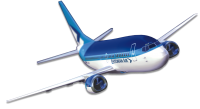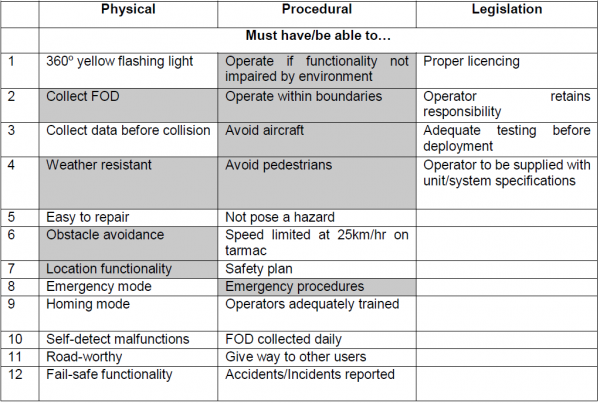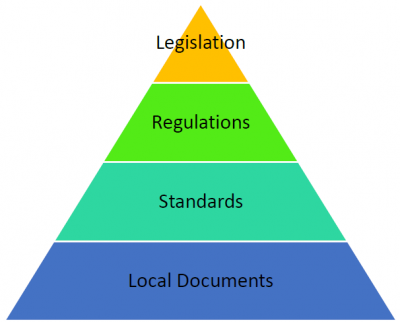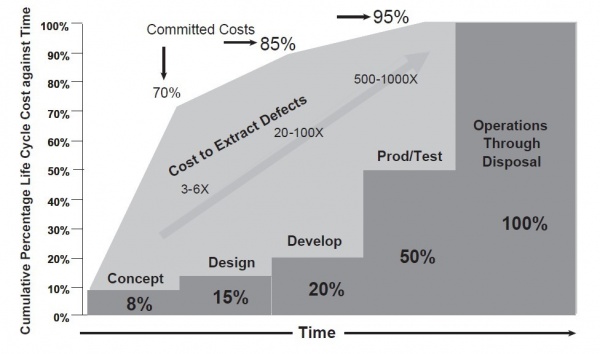Projects:2016s1-126 A Trash Collecting Robot
Contents
Project Group
- Gregory Davill
- Michael Poon
- Tony Daidone
Supervisors
- Braden Phillips
- Michael Liebelt
Foreign Object Debris Collecting Robot
Aim:
Conduct a feasibility study into an autonomous robot to collect Foreign Object Debris (FOD) from airport runways.
Project Overview:
FOD is a major cause of concern on airport runways as it it a precursor to aircraft damage. FOD can consist of objects such as aircraft parts, tools, wildlife and personal effects. Current processes do not sufficiently address the FOD issue. The proposed project relies on an autonomous robot to collect FOD before it poses a threat to aircraft. Path-planning, cost analysis and testing trust are the major technical challenges of the project that are explored by the team members. This project follows a System Engineering approach meaning that documents which are created will be based upon preceding documents. A Concept of Operations, System Requirements Document and Interim Engineering Reports (IER) have been produced, with the IER addressing the technical challenge and providing part of the overall feasibility study into its specific field.
Motivation
FOD induced direct, indirect, and birdstrikes costs, cost the airline industry $13.91 billion USD per annum. Taking into account that 50% of FOD strikes occur on the tarmac means that $6.215 billion is spent on FOD found on runways. Total aviation profit in 2011 was $7.9 billion USD. These figures show that the aviation profit can be significantly increased (nearly doubled) if FOD is correctly addressed. The project team, estimates that Adelaide airport can save up to $160,000 USD per annum on direct costs and ten times this amount including indirect costs such as delays and inefficiencies. The FAA estimates that runway inspections only uncover 3-4% of FOD present on the runway on that day. Another factor is that humans can become fatigued and perform less efficiently. An automated solution that is able to remove humans from the process can also remove their associated flaws and provide better FOD collection and detection.
Significance
There are numerous benefits resulting from this project. They can be split into how this project is significant to society and how it affects the project team. An addition of research to the field may help the aviation industry implement new technologies that can reduce costs and reduce the amount of aircraft accidents that occur. This means that fatalities too are also reduced. The project team will benefit from the acquisition or improvement of engineering skills in written communication skills, research techniques, production of documents inline with engineering documents and industry publications and the management of engineering projects.
Alternative Technologies
FOD management technologies divide into the fields of detection and collection systems. Detection systems utilise combinations of cameras and radar to detect FOD, some examples are FODetect by Xsight, Tarsier by QinetiQ , iFerret by Stratech and FOD Finder by Trex Enterprises. Collection systems are methods in which FOD are detected. They utilise machines operated by humans to collect the FOD or are done by humans manually, a FOD walk is a prime example of a manual method that detects and removes FOD.
Task allocation
As aforementioned the project was broken down into three separate technical challenges. These challenges are explored in-depth below.
Trust and Testing
As the project involves the use of an autonomous system, trust is an adequate measure to test it. However the system cannot be tested on trust solely. Trust is able to be tested through the use of correct operational procedures and safety. The fields of governance, risk management and compliance are sufficient in testing an autonomous systems where operational procedures and safety are paramount in their construction. Derived measures taken from those explored in governance and compliance will be useful for future groups to continue with the production of System Engineering documents.
Derived measures:
The cells in grey are those measures that are common with collated research and those developed by the project group.
It was discovered later that a legal hierarchy made up the building blocks to address these fields. This helped to further refine research until specific measures could be derived. The bottom two tiers are documents/methods to ensure compliance, whereas the top two tiers are ways governance is shown.
Cost Analysis
According to the NASA Langley Research Center, critical concept assumptions and choices made during the initial phase of projects determine roughly 70% of the final system life cycle cost. However, cost is usually estimated only after an engineering design process is completed. This often results in difficulty in acquiring cost-effective, high performance systems, as well as cost overruns- which may lead to cancellation of projects.
In the traditional systems engineering process, there is often disconnect between what designers decide and what is actually feasible. This usually leads to decision makers having a hard time dealing with a limited budget. Thus, system costs should be considered iteratively and should influence design decisions from the very start of development to find cost-effective solutions to requirements. However, it is often hard to make accurate cost estimates in the early phases due to the lack of design information. In addition, in formal contract projects, when system costs and schedules are in place, system trades become limited. This leads to less options for system candidates and alternatives.
Control and Simulation=
References
The information contained in this wiki has been derived from findings present in each members thesis.



